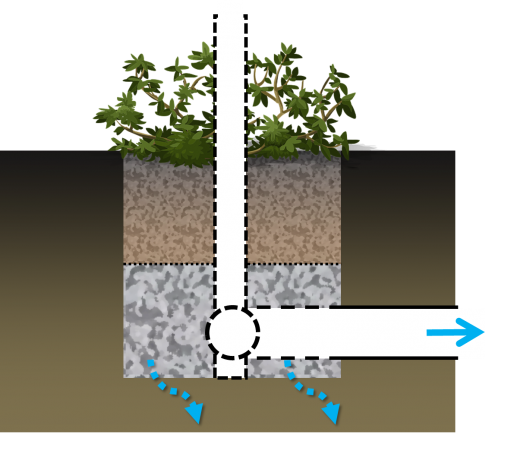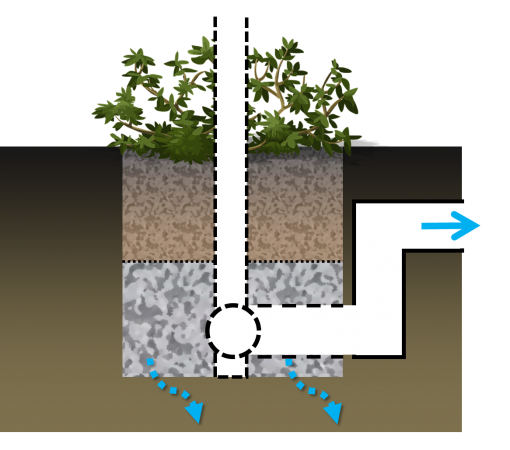Difference between revisions of "Bioretention: Partial infiltration"
Jump to navigation
Jump to search
Jenny Hill (talk | contribs) |
Jenny Hill (talk | contribs) |
||
| Line 3: | Line 3: | ||
<p>Over soils with slow infiltration rates, it is advantageous to drain a portion of the stored water prior to any upcoming storm. This popular design choice can optimize annual water balance, mitigate peak flow rates and by ensuring water flow through, can reduce the accumulation of sodium and chlorine ions from winter salting. </p> | <p>Over soils with slow infiltration rates, it is advantageous to drain a portion of the stored water prior to any upcoming storm. This popular design choice can optimize annual water balance, mitigate peak flow rates and by ensuring water flow through, can reduce the accumulation of sodium and chlorine ions from winter salting. </p> | ||
---- | ---- | ||
| − | |||
===Performance=== | ===Performance=== | ||
| − | + | {{Bioretention: Water quality}} | |
| − | |||
| − | |||
| − | |||
| − | |||
| − | |||
| − | |||
---- | ---- | ||
| − | + | ===Materials=== | |
| − | === | ||
<ol> | <ol> | ||
<li>[[Underdrain]]</li> | <li>[[Underdrain]]</li> | ||
| Line 35: | Line 27: | ||
[[Bioretention cells|<i class="fa fa-level-up" aria-hidden="true"></i><strong>Back to bioretention</strong>]] | [[Bioretention cells|<i class="fa fa-level-up" aria-hidden="true"></i><strong>Back to bioretention</strong>]] | ||
| + | {{:Feedback}} | ||
[[category:Infiltration]] | [[category:Infiltration]] | ||
Revision as of 12:25, 13 July 2017
Overview[edit]
Over soils with slow infiltration rates, it is advantageous to drain a portion of the stored water prior to any upcoming storm. This popular design choice can optimize annual water balance, mitigate peak flow rates and by ensuring water flow through, can reduce the accumulation of sodium and chlorine ions from winter salting.
Performance[edit]
Template:Bioretention: Water quality
Materials[edit]
<panelInfo>
</panelInfo>

